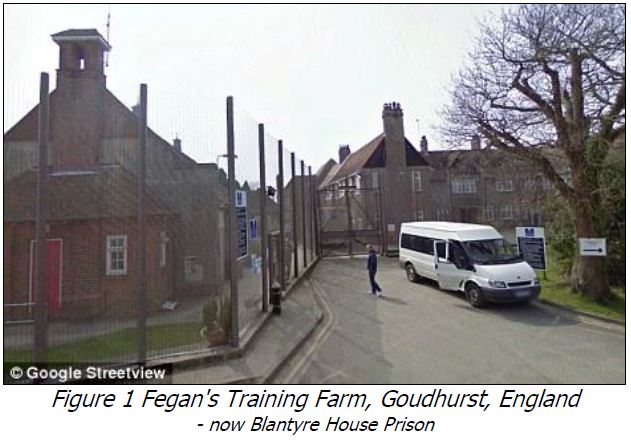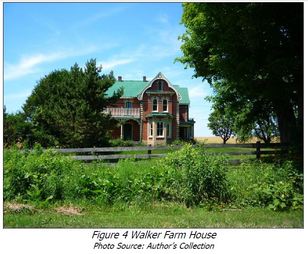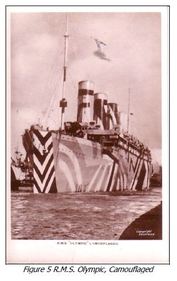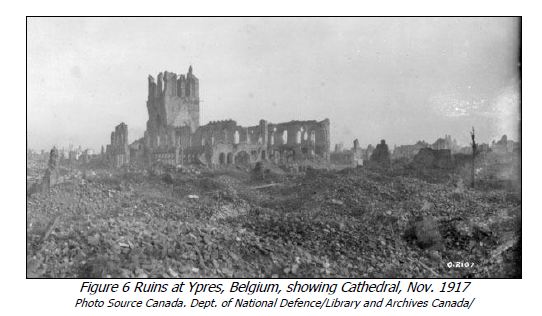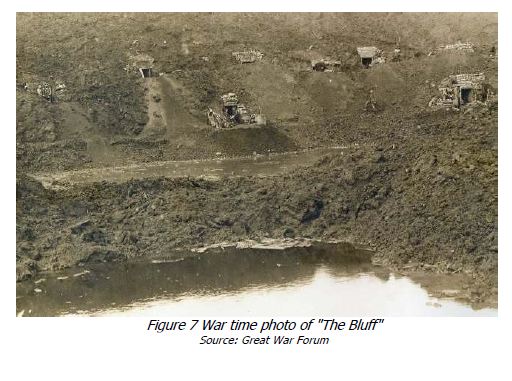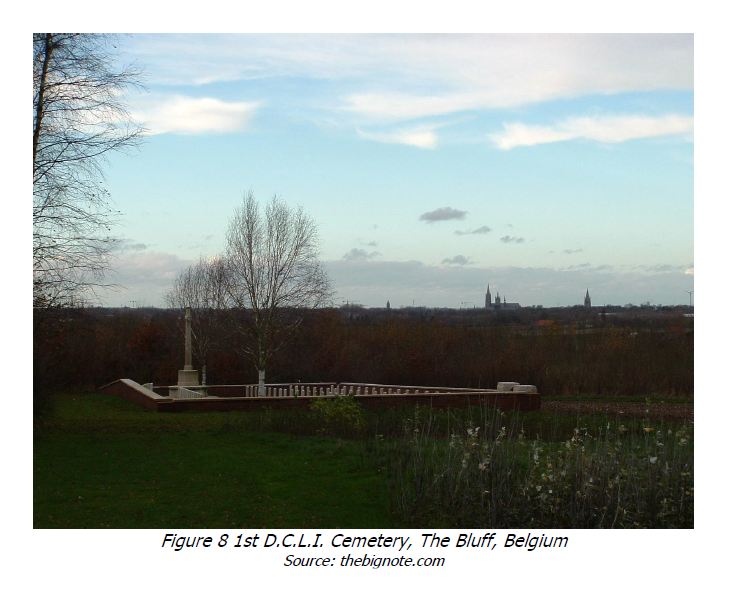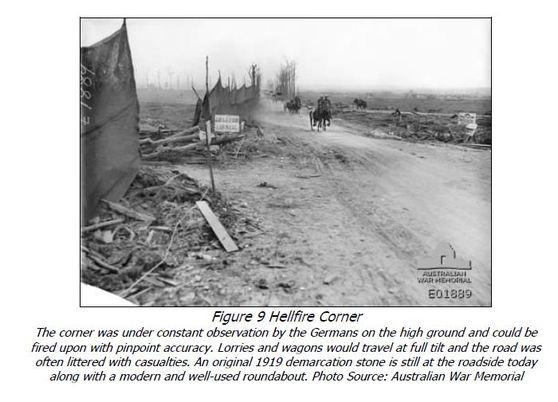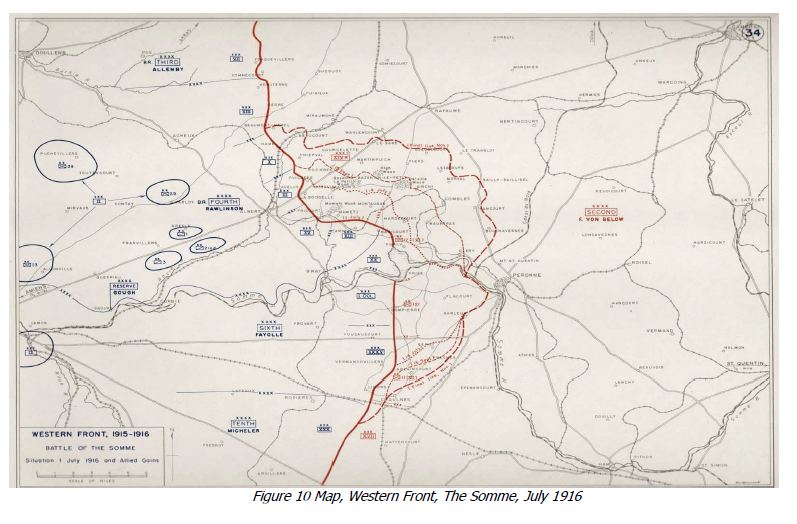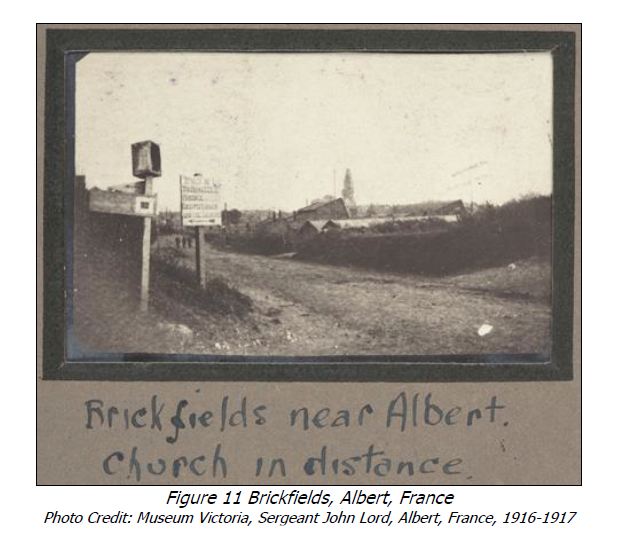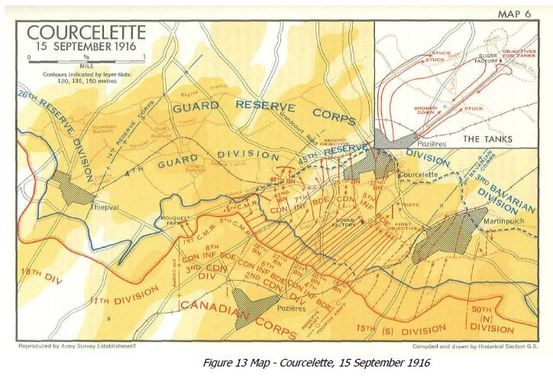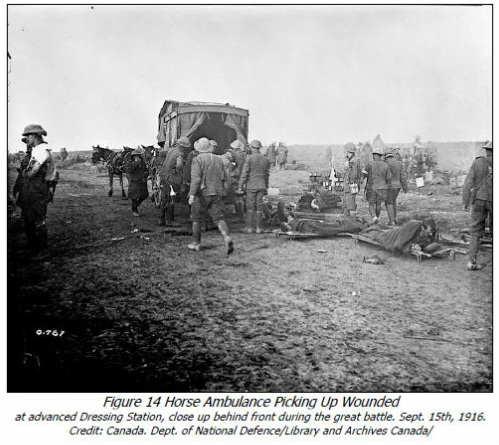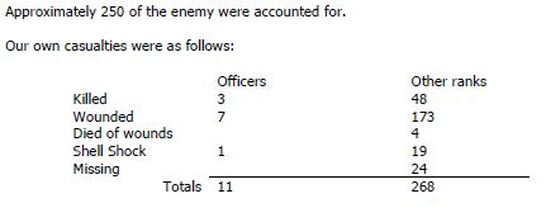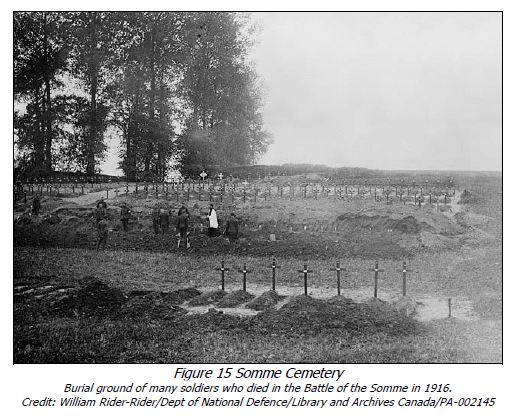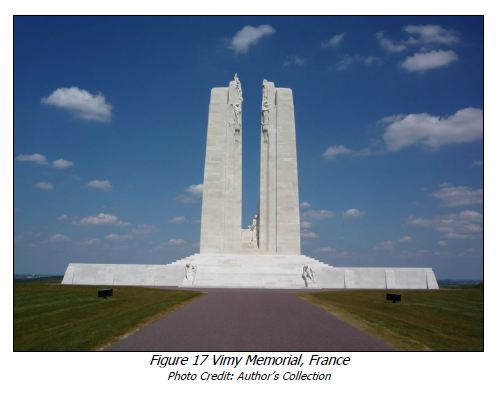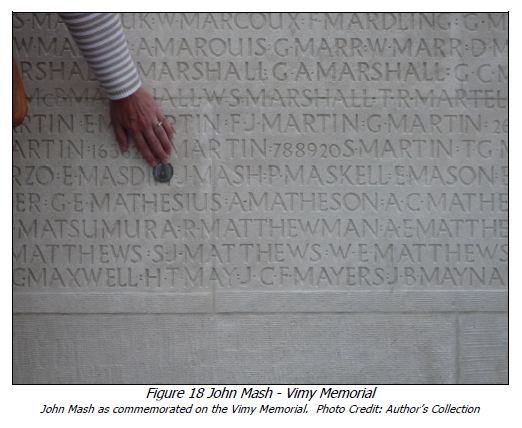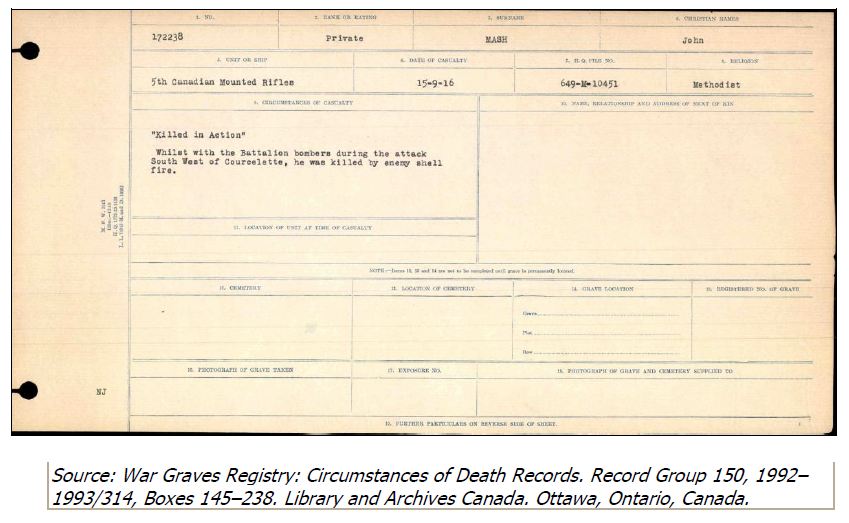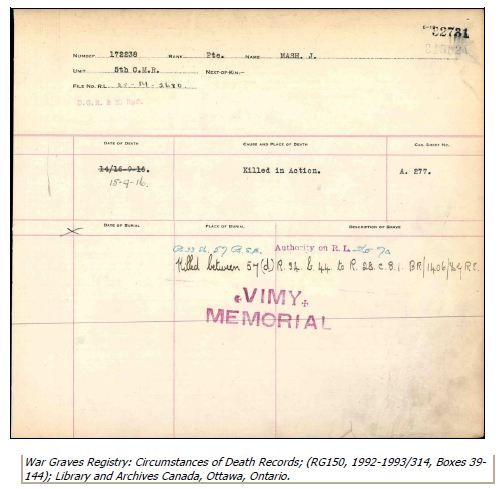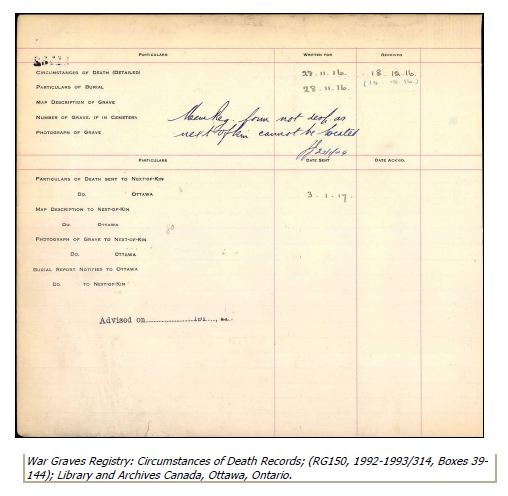Fegan Home Child - Private John Mash
172238
Canadian Expeditionary Force
The Queen’s Own Rifles of Canada &
5th Canadian Mounted Rifles
Killed in Action in the Battle of Courcelette
Sept 15th, 1916
Story written by "My Grandfather's War.ca"
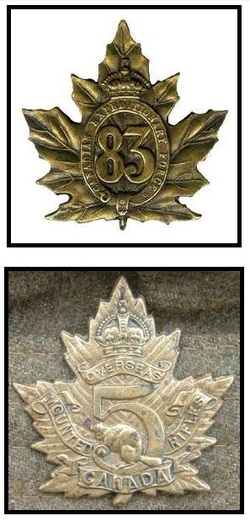
If hell is as bad as what I have seen at Courcelette,
I would not want my worst enemy to go there.”
Lieutenant Colonel Thomas Tremblay, 22nd Battalion, CEF
Early Days
John Mash was born to Eliza Mash in 1895 in East End London. The identity of his father is unknown. The 1901 census shows Eliza Mash, servant, as a visitor to the home of Mary Milford, laundress, in Bethnal Green. Both women are listed as widows and Eliza’s six-year-old son John is also listed as a visitor.
Starting in 1869 and into the 1930s, more than 100,000 poor or orphaned children were sent from Great Britain to British colonies. John Mash was one such child. Although not an orphan, it would seem that his mother did not have the means to care for him. He was taken into the care of W.C. Fegan who founded a society to assist destitute boys. Fegan established an educational farm in Goudhurst, taught the boys Canadian farming methods, and in 1884 commenced to send boys to Canada to start a new life.
Forty Fegan Boys
The Toronto Star, Page 13
Tuesday May 28, 1907
Forty boys from the Fegan Home, London, and twelve from the Hurst House Training Home, South Croydon, Surrey have reached Toronto and are now at the Fegan branch on George Street. The lads who range from 10 to 16 will be placed on Ontario farms. This is the first contingent from Hurst House. Should the experiment succeed the Surrey institution will send out fifty boys yearly.
Twelve year old John Mash sailed from Liverpool on 17 May 1907 on the Empress of Britain.The manifest for the Empress of Britain shows his age as 10, almost all other documents suggest he was born in 1895 making him 12 years old in 1907.
I would not want my worst enemy to go there.”
Lieutenant Colonel Thomas Tremblay, 22nd Battalion, CEF
Early Days
John Mash was born to Eliza Mash in 1895 in East End London. The identity of his father is unknown. The 1901 census shows Eliza Mash, servant, as a visitor to the home of Mary Milford, laundress, in Bethnal Green. Both women are listed as widows and Eliza’s six-year-old son John is also listed as a visitor.
Starting in 1869 and into the 1930s, more than 100,000 poor or orphaned children were sent from Great Britain to British colonies. John Mash was one such child. Although not an orphan, it would seem that his mother did not have the means to care for him. He was taken into the care of W.C. Fegan who founded a society to assist destitute boys. Fegan established an educational farm in Goudhurst, taught the boys Canadian farming methods, and in 1884 commenced to send boys to Canada to start a new life.
Forty Fegan Boys
The Toronto Star, Page 13
Tuesday May 28, 1907
Forty boys from the Fegan Home, London, and twelve from the Hurst House Training Home, South Croydon, Surrey have reached Toronto and are now at the Fegan branch on George Street. The lads who range from 10 to 16 will be placed on Ontario farms. This is the first contingent from Hurst House. Should the experiment succeed the Surrey institution will send out fifty boys yearly.
Twelve year old John Mash sailed from Liverpool on 17 May 1907 on the Empress of Britain.The manifest for the Empress of Britain shows his age as 10, almost all other documents suggest he was born in 1895 making him 12 years old in 1907.
|
After a short time in Toronto, John Mash was sent to live with the family of William Walker, his wife Ann, and son Gerald in Brock Township, Ontario near Lake Simcoe. The Walker’s were a farming family and John Mash was a servant and presumably a farm hand. The 1911 census lists his occupation as labourer, making seventy five dollars in the last year.
|
John Enlists
On August 30th, 1915 he enlisted in the Canadian Expeditionary Force. His Attestation Paper describes him as 5’ 1/4” with blue eyes, brown hair and a “fresh complexion”. Declared fit for the CEF, LCol Reg Pellatt (son of Sir Henry Pellatt of Casa Loma fame) signed his attestation paper and John Mash became a soldier in the 83rd Battalion, The Queen’s Own Rifles of Canada.
On April 28th, 1916 the unit sailed on the R.M.S. Olympic (a converted troop ship and sister to the Titanic), and on May 7th, 1916 landed in Liverpool, England. John Mash was back in his native land. Whether he had the opportunity to have a short visit with his mother, whom he had last seen as a ten-year-old boy, is unknown. His Attestation Papers list his next of kin as his mother, Mrs. Lizzie Barker of Bethnal Green, London. It would appear she had remarried.
On April 28th, 1916 the unit sailed on the R.M.S. Olympic (a converted troop ship and sister to the Titanic), and on May 7th, 1916 landed in Liverpool, England. John Mash was back in his native land. Whether he had the opportunity to have a short visit with his mother, whom he had last seen as a ten-year-old boy, is unknown. His Attestation Papers list his next of kin as his mother, Mrs. Lizzie Barker of Bethnal Green, London. It would appear she had remarried.
John Leaves For France
He was transferred to the 5th Canadian Mounted Rifles (5 CMR), 8th Infantry Brigade on June 6th, 1916. That same day, he landed in France. On June 10th he joined the unit in the field. The 5th Canadian Mounted Rifle Battalion was organized initially as a regiment in November 1914 under authorization published in General Order 36 of 15 March 1915. The regiment was commanded by Lieutenant-Colonel G.H. Baker. It was mobilized in Sherbrooke and recruited in the Eastern Townships.i The Battalion is perpetuated by the Sherbrooke Hussars. |
Presumably, Mash was well suited to the mounted battalion due to his farm work in Brock Township. He would have joined them shortly after the unit had been so sorely tested at Mount Sorrel. Their Commanding Officer, LCol G.H. Baker, was killed in that action at Sanctuary Wood. Baker had been the Member of Parliament for Brome County, Quebec and appears to be the only M.P. to have been killed in action in the war. He had led the battalion since it was first raised.In the days following, based out of Steenvoorde, Norde-Pas-du-Calais, France, the unit would practice gas helmet drill, instruction in bomb throwing, bayonet fighting, wire cutting and sniping.
At night “the battalion practised inter-battalion reliefs as carried out in the trenches”.ii
At night “the battalion practised inter-battalion reliefs as carried out in the trenches”.ii
Action
Training would carry on into July, interspersed with Church Parades and inspection and inspection by the Corps Commander, Lt Gen Hon Sir Julian Byng.In the evening of July 17th, the battalion proceeded through Ypres and Zillebeke to take up position on the front line, relieving the Princess Patricia’s Canadian Light Infantry (PPCLI) in the right sub-sector. They would stay in the trenches for the next six days. The balance of July would be spent supplying working parties for the front line trenches. On the first of August they were relieved by The Royal Canadian Regiment and retired to the infantry barracks at Ypres, Camp Erie.
Prior to the war Ypres had been a beautiful city:
“I see from my notebook that we did not get to Ypres until the afternoon, but I think it must have been before the hour mentioned in the following entry :
' 14.10.14. 4.45 p.m. On Place at Ypres. Wonderful Town Hall. Coats of arms on roof. Aeroplane prisoners
Ypres is (or, alas, was) a very beautiful and quaint old town, containing wonderful buildings. The Place d'Armes is the centre of the town, and along great portion of this is the historic building variously known as the Halles, the Linen Hall, the Markets, the Cloth Hall, and the Town Hall. This building struck my fancy in a way impossible to describe. In its vast ground-level vaulted chamber hundreds of horses were stabled, while above in the great frescoed galleries soldiers were billeted. It was of grey stone, with a lofty belfry that was in process of restoration, and to which the scaffolding still clung. The roof was of enormous extent, sloping down over the walls from a great height, and on it, gleaming in the sun, were four painted escutcheons of the ancient Counts of Flanders. Behind the Town Hall was the Cathedral of St. Martin, a noble edifice. The houses round the square were all old, and had
gables and overhanging eaves, and sun-blistered shutters opening flat against their walls. I marvelled greatly that I had ly even heard ofYpres ; it was so beautiful.”
Prior to the war Ypres had been a beautiful city:
“I see from my notebook that we did not get to Ypres until the afternoon, but I think it must have been before the hour mentioned in the following entry :
' 14.10.14. 4.45 p.m. On Place at Ypres. Wonderful Town Hall. Coats of arms on roof. Aeroplane prisoners
Ypres is (or, alas, was) a very beautiful and quaint old town, containing wonderful buildings. The Place d'Armes is the centre of the town, and along great portion of this is the historic building variously known as the Halles, the Linen Hall, the Markets, the Cloth Hall, and the Town Hall. This building struck my fancy in a way impossible to describe. In its vast ground-level vaulted chamber hundreds of horses were stabled, while above in the great frescoed galleries soldiers were billeted. It was of grey stone, with a lofty belfry that was in process of restoration, and to which the scaffolding still clung. The roof was of enormous extent, sloping down over the walls from a great height, and on it, gleaming in the sun, were four painted escutcheons of the ancient Counts of Flanders. Behind the Town Hall was the Cathedral of St. Martin, a noble edifice. The houses round the square were all old, and had
gables and overhanging eaves, and sun-blistered shutters opening flat against their walls. I marvelled greatly that I had ly even heard ofYpres ; it was so beautiful.”
After a period of rest the battalion moved to an area called “The Bluff”, near Zillebeke. After a period of rest the battalion moved to an area called “The Bluff”, near Zillebeke. “On the northern embankment of the canal, a curious mound - a spoil-heap, created when the canal was excavated - gave the British front an unusual observation advantage over the enemy. If the enemy held it, the view across the rear areas of the Salient to Hill 60, towards Ypres and down to Voormezele would have made the Salient very difficult to hold.”
Honours Awarded Members
August 10 to 24 were spent in the trenches. On the 11th, the battalion suffered several casualties. For action on this day Lance Corporal Macnamara was recommended for the Victoria Cross, and was awarded the Distinguished Conduct Medal:
War Diary: “For conspicuous bravery, in going out from the CRATER in broad daylight and in the face of enemy machine gun and rifle fire, and bringing in Sgt Smith who was mortally wounded in the stomach by a sniper. Two previous attempts at rescue had been made but were frustrated by enemy fire. L/Cpl Macnamara succeeded in bringing in Sgt Smith and dressed his wounds, but unfortunately Sgt Smith died about one hour later."
Two members of the battalion were awarded the Victoria Cross; George Randolf Pearkes for action in the Battle of Passchendaele in 1917, and Charles Smith Rutherford for action in Battle of the Scarpe in 1918. Rutherford had also served with The Queen’s Own Rifles of Canada.
On Sept 7th the battalion commenced to move with the Division to the Somme to take part in the offensive. Planning for an offensive on the Somme had been in the works since December of 1915. It was to be a major offensive by the French with close support from the British forces, another attempt to breach the defenses of the Germans and bring an end to the war. Previous attempts had failed with mass casualties and little ground gained. The French commander, General Joffre, and the British commander, the newly appointed General Sir Douglas Haig, disagreed on the offensive.
Joffre wanted to break German forces from south of the Somme to the north of the Ancre. The area was open ground and a heavily fortified area of the Western Front. Haig preferred Flanders, taking the German right flank and clearing the Channel Ports. In February 1916, Joffre won and his plan was adopted. The French would lead with support from the British and the offensive would be on the Somme.
An offensive by the enemy changed the plan. On February 21st, 1916 the Germans launched an attack on Verdun. It would be the longest battle of the war. The Germans felt that the French would defend the area to the last man and with French forces destroyed, the British would seek terms with Germany. Of 330 French infantry regiments, 259 fought at Verdun. There was no way the French could lead a major offensive on the Somme and Joffre needed a diversionary tactic to drain German manpower from Verdun. The Somme offensive, initially scheduled for August 1st, was moved up to June 25th and postponed to July 1st, with the British taking the lead while the French struggled on with Verdun.
French newspapers reported on a coming offensive. The German Commander in Chief didn’t believe it would come on the heavily defended Somme. The offensive started on July 1st. John Mash would find himself in it in September.
War Diary: “Sept 10 Montrelet: CO spent part of a gift of “$200 from Mr. C.B. Gordon of Montreal on beer for the men in the afternoon. This unexpected treat was greatly appreciated by the men especially after their dusty march.”
War Diary: “For conspicuous bravery, in going out from the CRATER in broad daylight and in the face of enemy machine gun and rifle fire, and bringing in Sgt Smith who was mortally wounded in the stomach by a sniper. Two previous attempts at rescue had been made but were frustrated by enemy fire. L/Cpl Macnamara succeeded in bringing in Sgt Smith and dressed his wounds, but unfortunately Sgt Smith died about one hour later."
Two members of the battalion were awarded the Victoria Cross; George Randolf Pearkes for action in the Battle of Passchendaele in 1917, and Charles Smith Rutherford for action in Battle of the Scarpe in 1918. Rutherford had also served with The Queen’s Own Rifles of Canada.
On Sept 7th the battalion commenced to move with the Division to the Somme to take part in the offensive. Planning for an offensive on the Somme had been in the works since December of 1915. It was to be a major offensive by the French with close support from the British forces, another attempt to breach the defenses of the Germans and bring an end to the war. Previous attempts had failed with mass casualties and little ground gained. The French commander, General Joffre, and the British commander, the newly appointed General Sir Douglas Haig, disagreed on the offensive.
Joffre wanted to break German forces from south of the Somme to the north of the Ancre. The area was open ground and a heavily fortified area of the Western Front. Haig preferred Flanders, taking the German right flank and clearing the Channel Ports. In February 1916, Joffre won and his plan was adopted. The French would lead with support from the British and the offensive would be on the Somme.
An offensive by the enemy changed the plan. On February 21st, 1916 the Germans launched an attack on Verdun. It would be the longest battle of the war. The Germans felt that the French would defend the area to the last man and with French forces destroyed, the British would seek terms with Germany. Of 330 French infantry regiments, 259 fought at Verdun. There was no way the French could lead a major offensive on the Somme and Joffre needed a diversionary tactic to drain German manpower from Verdun. The Somme offensive, initially scheduled for August 1st, was moved up to June 25th and postponed to July 1st, with the British taking the lead while the French struggled on with Verdun.
French newspapers reported on a coming offensive. The German Commander in Chief didn’t believe it would come on the heavily defended Somme. The offensive started on July 1st. John Mash would find himself in it in September.
War Diary: “Sept 10 Montrelet: CO spent part of a gift of “$200 from Mr. C.B. Gordon of Montreal on beer for the men in the afternoon. This unexpected treat was greatly appreciated by the men especially after their dusty march.”
The following day would see them march for 15 miles before reaching the area of Vadencourt. On September 12th they reached La Boiselle near Albert and relieved the 8th battalion. They were billeted in an area called “The Brickfields”:
On the outskirts of Albert was the Brickfields, a large billeting area among an old brick factory. The 2nd Battalion found it,
"... an inhospitable area of chalky ground, scantily covered with grass, on a low ridge west of town. Bare and uninviting at the best of times.
“On the Brickfields the men quickly discovered that boxes of Small Arms ammunition could be built into substantial walls; and when a tarpaulin was thrown over them an adequate hutment was the result. Diligently they applied themselves to the task of creating comfort, their industry accelerated by the downpour, which began to drench the place. Huddling within their improvised shelters, they paid little heed to the long-range shelling which was scattered indiscriminately over the area”.
On the outskirts of Albert was the Brickfields, a large billeting area among an old brick factory. The 2nd Battalion found it,
"... an inhospitable area of chalky ground, scantily covered with grass, on a low ridge west of town. Bare and uninviting at the best of times.
“On the Brickfields the men quickly discovered that boxes of Small Arms ammunition could be built into substantial walls; and when a tarpaulin was thrown over them an adequate hutment was the result. Diligently they applied themselves to the task of creating comfort, their industry accelerated by the downpour, which began to drench the place. Huddling within their improvised shelters, they paid little heed to the long-range shelling which was scattered indiscriminately over the area”.
War Diary: “Sept 12, 1916: We are to attack, in conjunction with a larger movement south of us, on the morning of the 15th - our objective being the enemy line in front of our sub-sector and the 1st CMR’s objective being Mouquet Farm - which is very strong, with deep dug outs. The Australians captured the farm a week or so ago, but failed to hold it, chiefly, it is believed on account of “not mopping up” thoroughly. Their two waves went over all right, but the enemy emerged immediately, and turned machine guns on them in the rear.”
The 8th Canadian Infantry Brigade Operation Order No. 41 describes the larger operation. The Brigade would attack along with the 2nd Canadian Division who were to “capture and consolidate” a portion of the German trench line. The 8th Brigade would protect the left flank of the 2nd Division by occupying a portion of the German front line, and digging a trench to join up with the existing Allied front line. This would allow “effective enfilade machine gun fire along the front of 2nd Canadian Division’s objective” in addition to establishing posts. They would also raid German trenches in the area of Mouquet Farm.
Of note in the Battle of Flers-Courcelette is the first appearance of tanks. They would be deployed in support of the 2nd Canadian Division in the area of the Pozieres Courcelette Road.
“The tanks were used at the Somme in direct opposition to the wishes of those who had originated and were responsible for this branch of the forces. It was a premature disclosure of an important secret, for neither was there a sufficient number of tanks on hand to make the action decisive, nor had the available tanks been sufficiently tried out and mechanically improved to make their operation fairly certain. Besides this, the ground over which they were to operate was most unsuitable for tanks, nearly every square foot of it having been ploughed up again and again by shell fire. In spite of the trial being under conditions that made failure most probable, the tanks did not do too badly. Forty-nine machines were detailed for the attack and of these thirty-two reached the front line. Fourteen were very quickly "ditched" or otherwise put out of action, but the remaining eighteen were of considerable assistance in the attack. Their number was too small for them to materially influence the decision of the battle, but they proved their worth as machine gun and wire destroyers and saved many lives for the infantry.”
The 8th Canadian Infantry Brigade Operation Order No. 41 describes the larger operation. The Brigade would attack along with the 2nd Canadian Division who were to “capture and consolidate” a portion of the German trench line. The 8th Brigade would protect the left flank of the 2nd Division by occupying a portion of the German front line, and digging a trench to join up with the existing Allied front line. This would allow “effective enfilade machine gun fire along the front of 2nd Canadian Division’s objective” in addition to establishing posts. They would also raid German trenches in the area of Mouquet Farm.
Of note in the Battle of Flers-Courcelette is the first appearance of tanks. They would be deployed in support of the 2nd Canadian Division in the area of the Pozieres Courcelette Road.
“The tanks were used at the Somme in direct opposition to the wishes of those who had originated and were responsible for this branch of the forces. It was a premature disclosure of an important secret, for neither was there a sufficient number of tanks on hand to make the action decisive, nor had the available tanks been sufficiently tried out and mechanically improved to make their operation fairly certain. Besides this, the ground over which they were to operate was most unsuitable for tanks, nearly every square foot of it having been ploughed up again and again by shell fire. In spite of the trial being under conditions that made failure most probable, the tanks did not do too badly. Forty-nine machines were detailed for the attack and of these thirty-two reached the front line. Fourteen were very quickly "ditched" or otherwise put out of action, but the remaining eighteen were of considerable assistance in the attack. Their number was too small for them to materially influence the decision of the battle, but they proved their worth as machine gun and wire destroyers and saved many lives for the infantry.”
War Diary: “Sept 13, 1916 - Front Line Cemetery: Weather fine and clear. Relief of 4 CMR Bn completed by 4:30 am.
completed by 4:30 am.
Sept 14, 1916 - Front Line Cemetery: Casualties during relief………
…..Orders received that the 8 Canadian Infantry Brigade would attack on 15 September (tomorrow) in conjunction with 2nd Canadian Division on our right, the attack to be pushed with the utmost vigour until the objective is reached and every opportunity to be seized of exploiting success. Battalion orders issued for 5 CMR Battalion to attack, occupy, and consolidate the German trench line from R.34.b.9.7 to R.28.d.4.2 (Reference map Ferme du Mouquet 1/5000) and to bomb down the enemy’s trench R.28.d.4.2 and R.34.b.7.9 to the road, where blocks are to be put in and Infantry posts established. A communication (trench) to be dug joining up the captured German trench to our front line in the vicinity of R.28.d.0.1. Two Stokes guns were placed under the orders of OC 5th CMR for the operation.
Artillery Section The 2nd Canadian Division Artillery to c-operate with barrages on German front line trenches R.d. and communication trenches R.28.d.5.7 and R.29.c.0.9. The 18 pounders batteries of 5th Bde C.F.A. to barrage the enemy’s front line trenches from R.28.d.6.0 to R.28.d.0.4. Three 18 pounder batteries of the 7th Brigade C.F.A. to barrage the German support trench from R.28.d.5.7 to R.29.e.0.9. The 2nd (How) Battery C.F.A. to walk up and down the same sector of support trench.
Disposition “B” and “D” Companies plus two full sections of Battalion Bombers to form the attacking for(ce) and attack in two waves.
1st Wave - to include mopping up parties and bombers
2nd Wave - consolidation party and two Lewis guns and crews
our Colt gun held in reserve under Company Commanders orders.
Objectives
“D” Coy on right R.34.b.9.7 to R.34.b.6.9 1/2
“B” Coy on left R.34.b.6.9 1/2 (road inclusive) to R.28.d.4.2. The right company “D” to keep touch and co-operate with the 28th Canadian Infantry Battalion on our right.
“C” Coy to occupy and consolidate line from about R.28.d.0.1 to R.28.d.4.2
“A” Coy to occupy the whole of our present front line from 28.C.0.9 1/2. 1 1/2 to R.34.B.3 1/2.4 (road inclusive)
Stokes Guns (2) in position from where they can best co-operate with the Bombers
Colt Guns (2) to operate on the left of the attacking forces and to take up a position from which an enfilade fire can be brought to bear around our front and that of the 2nd Canadian Division on our right.
Brigade Machine gun Company to keep up a continual barrage on enemy support and communication trenches and roadways in rear, throughout the operations.
2nd Coy 5th Br Special Brigade R.E. co-operating on our left and and to flare a smoke screen if the wind is favourable.
“Mopping up” and covering parties to be detailed by the attacking force.
Dumps R.E. dump at junction of TOMS CUT and our present front line. Grenade and S.A.A. dump at R.34.b.8 1/2.2
The 7th Squadron R.F.C. to keep communication with contact patrols. Helmets to be waved whenever aeroplanes sound the Klaxon Horn.
Attainment of objectives to be signalled by 2 Red flares.
Constant communication to Battalion Headquarters by runners.
48 hours rations to be carried and water bottles to be filled.
The Brigade Intelligence Officer (Captain MAHN) and the Battalion Intelligence Officer (Captain Howell Smith) together with 6 Scouts to act as runners established an O.P. at R.34.b.3.3 (approximately) affording a splendid view of the field of operations. Zero time 6:20 a.m. 10/9/16.”
Sept 15th 1916 - Preparatory to the attack the scouts patrolled No Mans Land along our entire front reporting that the enemy occupied their front line trenches, but had no Saps in front, and had no advanced Bombing Posts. Also that the ground was suitable for attack and there were no obstacles.
At ZERO (6:20 a.m.) an intense and effective barrage was opened, 50 yards short of enemy line trench.
At 0.1 Barrage lifted on to German front line trench.
At 0.4 Barrage lifts 100 yards and at 0.7 lifted another 100 yards till further orders.
Previous to this, at about 2.00 AM, the first wave of the attacking force took up a position about 30 yards in front of our font line, and dug themselves in from view. The second wave also dug in from view on our front lines. Immediately our artillery opened up, the first wave moved forward followed one minute later by the second wave. The Barrage was followed very slowly, the first wave suffering a few casualties from our own fire. The Bombing Officer LIEUT. William WILLISON being killed.
The men moved steadily forward at the walk. Immediately the barrage lifted off the enemy trench the first wave went in and had the situation well in hand by the time the second wave arrived. All the Germans in the trench were either killed or wounded. Mopping up parties immediately proceeded to Bomb the dugouts inflicting many casualties, amongst whom were two Officers.
The Bombing sections bombed down the communication trenches. Considerable opposition on the part of the enemy’s bombers was met with in the left communication trench, our first bombing section of the left company being practically wiped out. The second section which had been held in readiness for such a contingency immediately continued the attack and very quickly overcame the enemy’s bombers, all of whom were killed.
Enemy reinforcements who were on their way up retired in disorder. Our Bombers went on and put in a “Block” at R.28.0.H.4.4 1/2. Infantry Posts were established to continue our line to this Block.
completed by 4:30 am.
Sept 14, 1916 - Front Line Cemetery: Casualties during relief………
…..Orders received that the 8 Canadian Infantry Brigade would attack on 15 September (tomorrow) in conjunction with 2nd Canadian Division on our right, the attack to be pushed with the utmost vigour until the objective is reached and every opportunity to be seized of exploiting success. Battalion orders issued for 5 CMR Battalion to attack, occupy, and consolidate the German trench line from R.34.b.9.7 to R.28.d.4.2 (Reference map Ferme du Mouquet 1/5000) and to bomb down the enemy’s trench R.28.d.4.2 and R.34.b.7.9 to the road, where blocks are to be put in and Infantry posts established. A communication (trench) to be dug joining up the captured German trench to our front line in the vicinity of R.28.d.0.1. Two Stokes guns were placed under the orders of OC 5th CMR for the operation.
Artillery Section The 2nd Canadian Division Artillery to c-operate with barrages on German front line trenches R.d. and communication trenches R.28.d.5.7 and R.29.c.0.9. The 18 pounders batteries of 5th Bde C.F.A. to barrage the enemy’s front line trenches from R.28.d.6.0 to R.28.d.0.4. Three 18 pounder batteries of the 7th Brigade C.F.A. to barrage the German support trench from R.28.d.5.7 to R.29.e.0.9. The 2nd (How) Battery C.F.A. to walk up and down the same sector of support trench.
Disposition “B” and “D” Companies plus two full sections of Battalion Bombers to form the attacking for(ce) and attack in two waves.
1st Wave - to include mopping up parties and bombers
2nd Wave - consolidation party and two Lewis guns and crews
our Colt gun held in reserve under Company Commanders orders.
Objectives
“D” Coy on right R.34.b.9.7 to R.34.b.6.9 1/2
“B” Coy on left R.34.b.6.9 1/2 (road inclusive) to R.28.d.4.2. The right company “D” to keep touch and co-operate with the 28th Canadian Infantry Battalion on our right.
“C” Coy to occupy and consolidate line from about R.28.d.0.1 to R.28.d.4.2
“A” Coy to occupy the whole of our present front line from 28.C.0.9 1/2. 1 1/2 to R.34.B.3 1/2.4 (road inclusive)
Stokes Guns (2) in position from where they can best co-operate with the Bombers
Colt Guns (2) to operate on the left of the attacking forces and to take up a position from which an enfilade fire can be brought to bear around our front and that of the 2nd Canadian Division on our right.
Brigade Machine gun Company to keep up a continual barrage on enemy support and communication trenches and roadways in rear, throughout the operations.
2nd Coy 5th Br Special Brigade R.E. co-operating on our left and and to flare a smoke screen if the wind is favourable.
“Mopping up” and covering parties to be detailed by the attacking force.
Dumps R.E. dump at junction of TOMS CUT and our present front line. Grenade and S.A.A. dump at R.34.b.8 1/2.2
The 7th Squadron R.F.C. to keep communication with contact patrols. Helmets to be waved whenever aeroplanes sound the Klaxon Horn.
Attainment of objectives to be signalled by 2 Red flares.
Constant communication to Battalion Headquarters by runners.
48 hours rations to be carried and water bottles to be filled.
The Brigade Intelligence Officer (Captain MAHN) and the Battalion Intelligence Officer (Captain Howell Smith) together with 6 Scouts to act as runners established an O.P. at R.34.b.3.3 (approximately) affording a splendid view of the field of operations. Zero time 6:20 a.m. 10/9/16.”
Sept 15th 1916 - Preparatory to the attack the scouts patrolled No Mans Land along our entire front reporting that the enemy occupied their front line trenches, but had no Saps in front, and had no advanced Bombing Posts. Also that the ground was suitable for attack and there were no obstacles.
At ZERO (6:20 a.m.) an intense and effective barrage was opened, 50 yards short of enemy line trench.
At 0.1 Barrage lifted on to German front line trench.
At 0.4 Barrage lifts 100 yards and at 0.7 lifted another 100 yards till further orders.
Previous to this, at about 2.00 AM, the first wave of the attacking force took up a position about 30 yards in front of our font line, and dug themselves in from view. The second wave also dug in from view on our front lines. Immediately our artillery opened up, the first wave moved forward followed one minute later by the second wave. The Barrage was followed very slowly, the first wave suffering a few casualties from our own fire. The Bombing Officer LIEUT. William WILLISON being killed.
The men moved steadily forward at the walk. Immediately the barrage lifted off the enemy trench the first wave went in and had the situation well in hand by the time the second wave arrived. All the Germans in the trench were either killed or wounded. Mopping up parties immediately proceeded to Bomb the dugouts inflicting many casualties, amongst whom were two Officers.
The Bombing sections bombed down the communication trenches. Considerable opposition on the part of the enemy’s bombers was met with in the left communication trench, our first bombing section of the left company being practically wiped out. The second section which had been held in readiness for such a contingency immediately continued the attack and very quickly overcame the enemy’s bombers, all of whom were killed.
Enemy reinforcements who were on their way up retired in disorder. Our Bombers went on and put in a “Block” at R.28.0.H.4.4 1/2. Infantry Posts were established to continue our line to this Block.
The right communication trench was found to be disused. It had been totally demolished by our shell fire. Very little resistance was encountered from the enemy. Those who were not killed or wounded in the Right Sector threw down their rifles and ran towards a sunken road with their hands up, and were accounted for by the Battalion on our right (28th Canadians).
A number of the enemy in the left sector attempted to get back to the support line but were caught by our machine guns fire and few if any got away. Consolidation of the new line progressed rapidly and was completed by 11 am and from the time of the attack until about 1:30 pm the enemy was fairly quiet. The new line was then heavily shelled until about 5 pm. when it quieted down considerably, reopening again at 6:30 pm and continuing heavily throughout the night.
During this time our casualties were heavy particularly in the right sector. Two scouting patrols were immediately sent out in front of the captured line to gain further information. They found a dugout at the end of a shallow sap at R.28.d.5.3 in which were 15 gunners all of whom were disposed of by bombs. The dugout was afterwards destroyed by our artillery. Two Lewis guns were place at the Block in communication trench cover our front and flanks.
One Lewis gun at R.28.d.4.2 and one at R.34.b.6 1/2.9 1/2. A Colt gun was placed at R28.d.6 1/2.4 which had an excellent field of fire and which accounted for a number of the enemy.
Our trenches were heavily shelled at intervals through out the day. At 6:30 pm the 4th CMR Bn carried out an attack from new trench R.34.b.9 1/2.1 1/2 - R.28.d.4 1/2.2, their objective being enemy line from R.28.d.3 1/2.7 to R.38.c.9 1/2.1. The attack was entirely successful and in addition a number of prisoners were captured.
As a result of our attack approximately 500 yards of enemy trench was captured and consolidated. Twenty prisoners were passed back. A large number of casualties were inflicted on the enemy. Three enemy machine guns were captured, two were in good condition which were used with good effect on the enemy, the other being too badly damaged by shell fire to be of any use.
The captured trenches were found to be in good condition, especially in the left sector where there were a number of deep dug outs. Very few casualties were suffered during the actual attack and capture, but during the heavy bombardment of the afternoon and throughout the night, we suffered heavily. “C” & “D’ Coys especially losing about one third of their effectives. Notwithstanding these losses all ranks behaved splendidly and were in the best of spirits at all times giving immediate and prompt response whenever called upon.
All our wounded and a number of the enemys evacuated and our dead buried (Lieuts LEAN & MILLER in the parados in rear of Left Sector).
The 7th Canadian Infantry Brigade on moving up had no direct communication for a time with the Division. We established communication between our Battalion Headquarters and theirs using our runners for this purpose, thus enabling them to keep in touch with their own line was established. Several of our runners were killed or wounded whilst employed on this service.
Special care was taken previous to the attack to ensure that all were made thoroughly acquainted with:
a) The objective
b) The part each unit or individual was to play
c) The location of the Dumps etc.
Company Commanders were given an opportunity of studying the ground as far as possible over which the attack was to take place. The German Trench was found to be well stocked with food, wines, liquors, cigars, and cigarettes, and large quantities of bombs, rifles, and machine gun and rifle ammunition were captured.
The enemy machine gun crews were big strapping men, but the personnel of the garrison was poor, many being mere boys, some not more than 16 years old.
Approximately 250 of the enemy were accounted for
A number of the enemy in the left sector attempted to get back to the support line but were caught by our machine guns fire and few if any got away. Consolidation of the new line progressed rapidly and was completed by 11 am and from the time of the attack until about 1:30 pm the enemy was fairly quiet. The new line was then heavily shelled until about 5 pm. when it quieted down considerably, reopening again at 6:30 pm and continuing heavily throughout the night.
During this time our casualties were heavy particularly in the right sector. Two scouting patrols were immediately sent out in front of the captured line to gain further information. They found a dugout at the end of a shallow sap at R.28.d.5.3 in which were 15 gunners all of whom were disposed of by bombs. The dugout was afterwards destroyed by our artillery. Two Lewis guns were place at the Block in communication trench cover our front and flanks.
One Lewis gun at R.28.d.4.2 and one at R.34.b.6 1/2.9 1/2. A Colt gun was placed at R28.d.6 1/2.4 which had an excellent field of fire and which accounted for a number of the enemy.
Our trenches were heavily shelled at intervals through out the day. At 6:30 pm the 4th CMR Bn carried out an attack from new trench R.34.b.9 1/2.1 1/2 - R.28.d.4 1/2.2, their objective being enemy line from R.28.d.3 1/2.7 to R.38.c.9 1/2.1. The attack was entirely successful and in addition a number of prisoners were captured.
As a result of our attack approximately 500 yards of enemy trench was captured and consolidated. Twenty prisoners were passed back. A large number of casualties were inflicted on the enemy. Three enemy machine guns were captured, two were in good condition which were used with good effect on the enemy, the other being too badly damaged by shell fire to be of any use.
The captured trenches were found to be in good condition, especially in the left sector where there were a number of deep dug outs. Very few casualties were suffered during the actual attack and capture, but during the heavy bombardment of the afternoon and throughout the night, we suffered heavily. “C” & “D’ Coys especially losing about one third of their effectives. Notwithstanding these losses all ranks behaved splendidly and were in the best of spirits at all times giving immediate and prompt response whenever called upon.
All our wounded and a number of the enemys evacuated and our dead buried (Lieuts LEAN & MILLER in the parados in rear of Left Sector).
The 7th Canadian Infantry Brigade on moving up had no direct communication for a time with the Division. We established communication between our Battalion Headquarters and theirs using our runners for this purpose, thus enabling them to keep in touch with their own line was established. Several of our runners were killed or wounded whilst employed on this service.
Special care was taken previous to the attack to ensure that all were made thoroughly acquainted with:
a) The objective
b) The part each unit or individual was to play
c) The location of the Dumps etc.
Company Commanders were given an opportunity of studying the ground as far as possible over which the attack was to take place. The German Trench was found to be well stocked with food, wines, liquors, cigars, and cigarettes, and large quantities of bombs, rifles, and machine gun and rifle ammunition were captured.
The enemy machine gun crews were big strapping men, but the personnel of the garrison was poor, many being mere boys, some not more than 16 years old.
Approximately 250 of the enemy were accounted for
Summary of Reports Received
6:27 AM Red flares reported, signifying that our objective has been reached.
6:30 AM Wireless operator at Battalion HQ caught “barrage excellent, enemy offering little resistance and surrounding in numbers”.
6:35 AM Second wave over.
6:55 AM Wounded and prisoners coming back.
7:00 AM Intelligence Officer (Captain Howell SMITH) reported that enemy had manned his parapet at R.38.b.9.4 to R.28d.4.6. and was firing on our men, who were hard at work consolidating. Our artillery was not playing on this part of the line at this time, and the enemy was congregating on his parapet and firing with impunity. The artillery liaison Officer at Battalion Headquarters (Lieut ARMOUR 22nd Battery) was at once informed. He acted very promptly and the artillery retaliation on this section of enemy trench was immediate and effective. Special mention is made of Lieut ARMOURS work during the operation. Through him we got artillery support promptly whenever and wherever it was most needed.
7:09 Report through Artillery that the 28th Battalion (Canadian) on our right had reached their objective
7:10 AM One of the “B” Coys Lewis Guns out of action - was replaced by one from the Reserve
7:50 AM O.C. “C” Coy reported work progressing very satisfactorily on new trench R.28.C(?).0.1. to R.28.C(?).4.2 connecting our old front line with new line.
7:55 AM O.C. Left Sector (Captain T.D. SNEATH) reports patrols out 150 to 200 yards in front, nothing located. He has now consolidated. No mention is made so far to the many individual acts of gallantry on the part of the Officers and men during the operations, but are shown later.”
Enemy casualties for the 8th Brigade amounted to some 900. Of these it is estimated the 5th Canadian Mounted rifles accounted for 250 with the remarks “Bayonetted in captured trench”.
6:27 AM Red flares reported, signifying that our objective has been reached.
6:30 AM Wireless operator at Battalion HQ caught “barrage excellent, enemy offering little resistance and surrounding in numbers”.
6:35 AM Second wave over.
6:55 AM Wounded and prisoners coming back.
7:00 AM Intelligence Officer (Captain Howell SMITH) reported that enemy had manned his parapet at R.38.b.9.4 to R.28d.4.6. and was firing on our men, who were hard at work consolidating. Our artillery was not playing on this part of the line at this time, and the enemy was congregating on his parapet and firing with impunity. The artillery liaison Officer at Battalion Headquarters (Lieut ARMOUR 22nd Battery) was at once informed. He acted very promptly and the artillery retaliation on this section of enemy trench was immediate and effective. Special mention is made of Lieut ARMOURS work during the operation. Through him we got artillery support promptly whenever and wherever it was most needed.
7:09 Report through Artillery that the 28th Battalion (Canadian) on our right had reached their objective
7:10 AM One of the “B” Coys Lewis Guns out of action - was replaced by one from the Reserve
7:50 AM O.C. “C” Coy reported work progressing very satisfactorily on new trench R.28.C(?).0.1. to R.28.C(?).4.2 connecting our old front line with new line.
7:55 AM O.C. Left Sector (Captain T.D. SNEATH) reports patrols out 150 to 200 yards in front, nothing located. He has now consolidated. No mention is made so far to the many individual acts of gallantry on the part of the Officers and men during the operations, but are shown later.”
Enemy casualties for the 8th Brigade amounted to some 900. Of these it is estimated the 5th Canadian Mounted rifles accounted for 250 with the remarks “Bayonetted in captured trench”.
The 8th Brigade War Diary lists total casualties at 860. Some 624 wounded, 61 missing and 175 killed, including Private John Mash.
According to his service records, there was some confusion as to the actual day of his death. Initially it was between September 14 -16, and it was later confirmed as September 15th, 1916.
Records from the Archives of Canada describe the circumstances - “Whilst with the Battalion bombers during the attack South West of Courcelette, he was killed by enemy shell fire.”
The Battalion war diary says: “The Bombing sections bombed down the communication trenches. Considerable opposition on the part of the enemy’s bombers was met with in the left communication trench, our first bombing section of the left company being practically wiped out. The second section which had been held in readiness for such a contingency immediately continued the attack and very quickly overcame the enemy’s bombers, all of whom were killed.”
Enemy reinforcements who were on their way up retired in disorder. Our Bombers went on and put in a “Block” at R.28.0.H.4.4 1/2.”
Did John Mash fall in this initial assault, or did he fall later “during the heavy bombardment of the afternoon and throughout the night”?
According to his service records, there was some confusion as to the actual day of his death. Initially it was between September 14 -16, and it was later confirmed as September 15th, 1916.
Records from the Archives of Canada describe the circumstances - “Whilst with the Battalion bombers during the attack South West of Courcelette, he was killed by enemy shell fire.”
The Battalion war diary says: “The Bombing sections bombed down the communication trenches. Considerable opposition on the part of the enemy’s bombers was met with in the left communication trench, our first bombing section of the left company being practically wiped out. The second section which had been held in readiness for such a contingency immediately continued the attack and very quickly overcame the enemy’s bombers, all of whom were killed.”
Enemy reinforcements who were on their way up retired in disorder. Our Bombers went on and put in a “Block” at R.28.0.H.4.4 1/2.”
Did John Mash fall in this initial assault, or did he fall later “during the heavy bombardment of the afternoon and throughout the night”?
